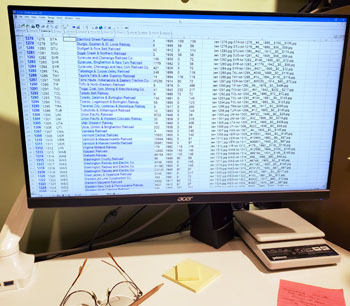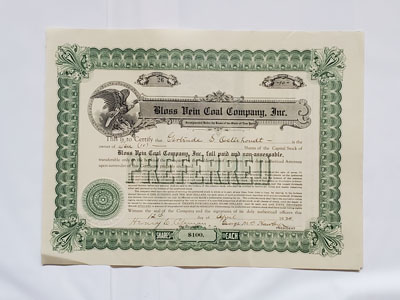Coxrail frequency of appearance scale
My system of estimating rarity is not really a "rarity system" at all. I cannot legitimately claim to know how many certificates exist in collections, dealer inventories, clearing houses and possibly company warehouses.
Therefore, I designed a system that calculates how often certificates have appeared in the past. I theorize that certificates will tend to appear at roughly the same rates in the future. Of course, certificates appear randomly, are reported randomly, and appear for sale randomly, so their frequencies of appearance change slowly over time. The database behind this website re-calculates frequencies of appearance every time I upload fresh versions of the database on or about the 1st and 15th of every month.
| Frequency |
|
Associated variety is likely to appear * |
| F? |
|
appearance frequency unknown ** |
| F1 |
|
more than 10 times per year |
| F2 |
|
5 to 10 times per year |
| F3 |
|
1 to 4 times per year |
| F4 |
|
once every 1 to 3 years |
| F5 |
|
once every 3 to 5 years |
| F6 |
|
once every 5 to 10 years |
| F7 |
|
less than once every 10 years |
| * |
based on appearances recorded since July 1, 1980 |
| ** |
varieties are suspected of being substantially scarcer than recorded prices would otherwise suggest |
 Common certificates under-counted
Common certificates under-counted
Because of the lack of time, I do NOT have the time to track and record certificates priced below $20. That means common certificates are highly under-represented in the database.
Many collectors keep track of their collections with Excel spreadsheets. They often ask if I would like a copy. I decline 99% of the time.
The reason for my avoidance is that it takes almost exactly the same amount of time to enter data from spreadsheets as it does examining photographs and scans. The major problem, however, is that spreadsheets remove all capability of re-examining certificates in the future. New sub-varieties appear all the time. Without images, I can never know which variety one of my contributors might have owned when they sent a spreadsheet,
But I still bemoan the fact that I do not have time to catalog highly common certificates. So...
Can you help?
Instead of asking for spreadsheets, I ask that collectors photograph all their common and low-priced certificates with their smartphones. The more the better. The only thing I ask is that images be good enough to read dates and serial numbers. Basically, that means photographing straight down on certificates with an adequate amount of light. You DO NOT need to do anything other than send images.
 Yes, scanned images would be ideal, but I know that a lot of you do not have scanners.
Yes, scanned images would be ideal, but I know that a lot of you do not have scanners.
Also, do NOT bother with unissued remainders that lack serial numbers.
If you know how to extract images from your phones (directions are always available on the web), you can send gobs of images in a single batch by using WeTransfer.com (free). If you cannot figure out how to get images off your phone, simply forward them to my phone. (Send an email, and I will give you my phone number.)
Photograph with your smartphone
Here is an example of a stock certificate photographed with my phone. I placed a piece of white paper on the kitchen floor where I had adequate light coming through a window, A plain white sheet would be a good substitute. I stood over the certificate, zoomed in a bit and clicked. No agonizing! No muss. No fuss.
Except for rotating 90º and resizing to fit this page, the image is just as it came out of my phone. As you can see, there was nothing fancy about this at all and it was STILL BETTER THAN A LOT OF THE TRASH YOU SEE ON EBAY. Getting decent images is just not that hard.